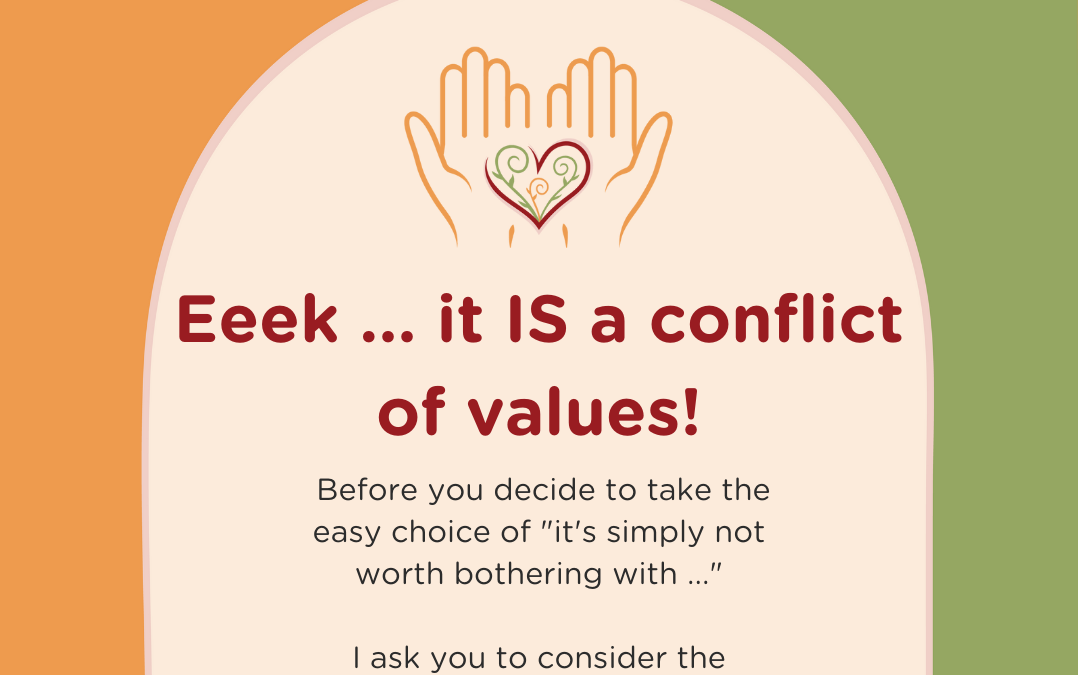A conflict of values is different from a conflict of needs and understanding this difference is an empowered place to work from.
A conflict of needs, and a conflict of hidden needs, deal with the ways people behave as a reaction to their environment. Behaviour can be changed with boundaries, clarity, consequences and consistency.
And, of course, excellent communication.
A conflict of values is slightly different.
You’ll know it’s a conflict of values if you have been consistently working on changing a behaviour and you haven’t had the results you were looking for. When one-step-forward for a week consistently results in ‘yeah-nah’ behaviour.
And there is a Reason for that
Values are not surface level. They are a reflection of the things we believe and the things we hold dear to us. The things we value are the things we take care of.
When our rangatahi hit adolescence, they often have a few changes in their value systems. They suddenly value their friends a whole lot more, and they begin to exchange their values for things their friends also value. Some of these values they will try out and discard. Others they will keep.
The values that you hold dear and have been passing on to your children will suddenly not be as important as the shiny new values their friends show them.
Adolescence is a time of growth and some things may be discarded. While it may hurt to have your personal values rejected, this is NOT about you. It’s about them trying out a new way of being.
And we are their guides. So, don’t take it personally. This is their journey of growth and discovery.
As the adult in the house, you do get to have your needs met. When it comes to working through a conflict of values, here are the steps you can take to resolve this conflict successfully.
Step One: Know your why
Understand the beliefs that are informed by the values that make this so important to you.
Step Two: Get hired
At the beginning of every successful sales conversation is the question, “Is now a good time to talk?”
Be guided by their answer. If they say “No” be okay with that. And ask, “Okay, when works for you?”
Resist the urge to give a ‘teaser’ or a ‘sneak peek’ of the issue. Good things are worth waiting for.
Being respectful of their wishes to have a conversation at a time that suits them is an excellent model of respect. Expect they will be respectful back to you and expect they will show up at the appointed time ready to have the conversation.
Step Three: Express your opinion as an opinion
Be brief as you express the nutshell of your opinion. Stay away from the words “should,” “have to” and “must” as these all bring obligation.
Instead, express your belief clearly and from your perspective. You might say, “I believe we are all capable of enjoying dinner time together. We can work together to make dinner time a pleasant experience.”
Step Four: Listen to what they have to say
Be reflective. Listen to understand their perspective. Acknowledge what you hear them say.
Step Five: Brainstorm as many solutions as you ALL can think of
No solution is too silly to not be included at the beginning of the process. Discussions will lead to a workable solution for everyone.
Setting an expectant and loving tone for the process gives you a much higher chance of resolving it successfully. As the adult, take the view and set the tone of:
- This is a problem worth solving
- I trust everyone can work together to do just that – solve it
- It’s just a small piece of our overall relationship.
Step Six: Leave the other person to make their own decision
This sounds so counter-intuitive.
However, if you have done a good job on all the other steps then your rangatahi:
- Will understand your values
- Have seen you modelling these values – you walk your talk
- Feel heard and acknowledged
And you will have left them with the space to review the pros and cons for themselves. This means they will feel respected for their right to decide.
Value changing is not a conversion experience.
Deep, powerful value changing happens when people have the space to personally review the pros and cons of advice and information.
It’s an opportunity to generate buy-in for themselves.
You are their guide. Not their controller.
And phew, doesn’t that feel great?
Is it time to change the family dynamics in your house? Head over to www.beautifulconversations.co.nz and check out your options. This is powerful work that is only for parents who are ready to start the change they’d like to see in their families.

